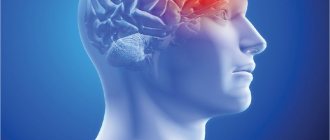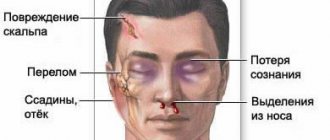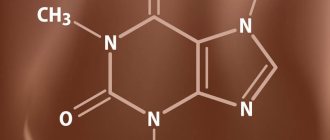How to check a car for theft in 2021?
Under the glass on a modern car there may be a vehicle identification number (VIN), which can be compared to the VIN on the car's documents. If the seller provides a service book, then you can additionally check the VIN, which is indicated in the service book, and the VIN, which is stamped under the car glass or indicated in the documents for the car.
Road accidents in which people (passengers, drivers, pedestrians) suffer health damage are considered the most complex, as they are fraught with more serious consequences. Determining the harm caused is an important procedure. Based on its results, a punishment is imposed on the perpetrator of the incident and on their basis an additional amount of compensation may be demanded.
The greater the damage to health, the heavier the penalty (including imprisonment). Who and how determines the severity of harm caused to health?
Authorized persons
Damage sustained during the accident is determined by a forensic medical examination. It is carried out exclusively in specialized government agencies. The initiator of such a study may be the prosecutor's office, the investigative committee or the court.
Only a forensic expert working in the relevant government agency can assess damage to health in an accident.
In some cases, a special commission must assess the consequences of a traffic accident. It is formed on the basis of an order from an investigator or judge. Its members include forensic experts and doctors of specific specializations. For example, if an accident caused damage to a pregnant woman who subsequently suffered a miscarriage, a gynecologist must be invited to participate in the examination.
If, as a result of a road incident, the victim begins:
- suffer from psychological disorders, then a psychotherapist is included in the commission;
- use toxic substances - toxicologist;
- use drugs - narcologist.
These doctors are required to confirm or deny the relationship between two events (collision and miscarriage, accident and drug use, etc.).
Degrees of harm
The concept of “harm to health” refers to a violation of the integrity of organs, changes in the functioning of limbs, deviations in the emotional plane, and the emergence of various types of addictions.
In total, there are 3 degrees of harm:
- Slight harm to health . When a victim receives a minor injury, the culprit usually loses his rights for 1-1.5 years or pays a fine of 2,500-5,000 rubles.
- Average harm to health . Punishable by withdrawal of rights for 1.5-2 years or payment of a fine of 10,000-25,000 rubles.
- Serious harm to health. This type of damage is punishable by criminal liability. Compensation for damage from an accident? Based on the characteristics of the incident, mitigating and aggravating factors, the guilty person is sentenced to three to nine years in prison and also loses his driver's license for 3 years.
What is a traumatic brain injury?
This is a closed (CTBI) or open (depending on the classification) traumatic brain injury, damage to soft tissues, cerebral membranes, blood vessels and nerves of the brain. Most often, injuries are caused by mechanical impact and most are combined - they include several types of trauma (bruises, fractures, ruptures).
Traumatic brain injury is divided into two main types – open and closed.
- In the first option, there are ruptures of the skin and connective tissue, as well as a possible violation of the integrity of the skull. If an open injury is accompanied by involvement of the subdural membrane, then the injury is considered penetrating.
- With the closed type, there is no damage to the connective tissue aponeuroses of the head, although the skin may be cut.
How is severity determined?
The standards for determining the severity of harm to the health of a victim in an accident are contained in the relevant Rules No. 522, approved. Government of the Russian Federation dated August 17, 2007.
The procedure for determining the extent of damage occurs in the following sequence:
- Study of medical documents: hospital records, reports of emergency doctors providing assistance immediately after the incident, traffic police reports, photos from the scene of the event.
- Studying a patient's medical record from a clinic. This allows you to understand which problems existed before the accident, and which were provoked by the road incident.
- Examination and diagnosis of a victim in an accident.
- Prescription of additional diagnostic procedures (if necessary). For example, in case of numerous internal injuries - ultrasound.
- Drawing up an expert opinion.
In the conclusion drawn up by the expert, the specialist answers the questions:
- How compatible are the injuries with life? Can they affect the worsening of the patient’s condition in the future or not?
- What kind of consequences does a traffic accident have on the health of the victim?
- How likely is permanent disability?
- How long will the disability last?
- What degree of harm did the victim receive?
In certain situations, the examination is carried out purely on the basis of medical documents. The conclusion is signed by all forensic experts who conducted it.
A selection for you!
Download forms and sample documents for motorists to a safe place.
How to stop beatings and bring the offender to justice?
The sooner you contact a forensic expert, the easier it will be for specialists to establish the fact of harm. This can be done even before writing the application.
You can contact both specialized authorities - a forensic medical examination, and a hospital, having received a certificate from a traumatologist or neurologist.
If you write a statement about beating, then an examination will be ordered by law enforcement agencies.
What to do when contacting the police:
- How to stop beatings and bring the offender to justice? Write a statement with a detailed description of the crime, the characters involved, the methods of inflicting pain and the locations of the blows.
- Examination by an expert in the direction of the police, followed by a conclusion on the severity level.
If you decide to identify harm yourself, then you should adhere to the following algorithm:
- Visiting a clinic, hospital, or emergency room. There, a certificate is issued with the diagnosis upon application, the nature of the injuries and the time of admission to the medical facility.
- With all the documents, go to the police to write a statement.
- Repeated examination with the participation of forensic doctors.
The last point is not always fulfilled, since the investigation may only need documents from the hospital.
Important! Battery is a serious offense. Do not be afraid to seek help from law enforcement agencies; beatings can be repeated and lead to more serious consequences.
Medical criteria
The severity of injuries in an accident is determined by paragraph 4 of the above Rules and Medical Criteria No. 194n dated April 24, 2008.
Bruises, scratches, superficial wounds, minor contusions, as a result of which the victim does not lose his ability to work, are not considered injuries that cause harm to the condition.
Typical signs of minor injuries:
- Minor loss of ability to work - up to 10%.
- Short-term health disorder - for a period of up to 3 weeks.
Characteristic signs of moderate injuries:
- Loss of general ability to work - 10-30%.
- Temporary disability - for a period of more than 3 weeks.
Criteria for classifying injuries as serious:
- Life-threatening injuries to the victim: injuries to the head, neck, intracranial injuries, spinal fractures, injuries to internal organs, rupture of large blood vessels, severe burns, etc.
- Violation of the most important functions that do not recover on their own and usually lead to the death of the victim: shock and severe coma, severe blood loss, cardiac, renal, respiratory failure, gangrene of the leg or arm, poisoning with biological or chemical substances, suffocation, etc.
- Loss of vision.
- Hearing loss.
- Loss of speech.
- Loss of organ and limb functions.
- Psychological illness.
- Drug or substance abuse.
- Miscarriage in a pregnant woman.
- Facial disfigurement.
- Significant loss of ability to work (more than 30%). This most often occurs with fractures of the humerus, elbow, acetabulum, hip, knee, tibia, as well as open dislocation of the shoulder, etc.
- Complete loss of professional fitness. Loss of innate or acquired abilities aimed at obtaining a social product.
In cases of severe injury, significant permanent loss of performance is observed. The recovery period is from 4 months. According to the table, its indicator is estimated to be more than 30%.
The degree of injury is determined based on only one criterion. If there are several of them, then the degree is determined by the largest of them. In case of repeated damage, it is determined for each stage (for example, during an accident and the provision of medical care). Preventing the death of the victim due to high-quality medical care is not taken into account when establishing the degree of injury.
Classification
In medical terminology, skull injuries are distinguished by severity, depending on the clinical form and combination of injuries.
According to the degree of severity, they are distinguished:
- A mild one is a concussion or bruise of the brain.
- Moderate – moderate brain injury.
- Severe – acute compression of brain tissue and severe brain injury.
Another classification includes a combination of injuries. I distinguish between isolated cases, in which the patient only experiences damage to the cranial bones. Combined - combined with trauma to other organs, and combined - when the mechanism of injury combines several types of effects (mechanical, electrical, thermal, radiation).
For clinical variation, we can distinguish:
- Fractures.
- A concussion is a health injury caused by mechanical impact and a violation of neurological functions. It goes away on its own after a few days, but persistence of symptoms is a more serious injury.
- Bruise in varying degrees of severity.
- Damage to white matter as a result of braking force. Accompanied by small focal hemorrhages and axonal separation.
- Compression - occurs when the space of the cranium decreases.
- Intracranial hemorrhage is divided into subarachnoid, intracerebral, ventricular and epidural.
For clinical forms, a combination of different types is possible.
Next video on the topic:
Duration of health disorder
The term long-term health disorder refers to a period of incapacity for a person to work. There are two varieties:
- Temporary . Implies loss of ability to work for a certain, limited period of time. It has a positive labor and clinical prognosis for the immediate period after injury. Temporary disorder is determined by a forensic expert based on reviewed medical documents.
- Persistent , when the treatment does not have the desired result, and the consequences of the accident interfere with the normal performance of job duties and are long-term. The victim becomes disabled. Disability may be temporary or permanent.
Only road damage is taken into account, and injuries that existed before the collision are not taken into account when determining the severity of injury to health.
In determining the duration of the disorder, factors other than physical injury are taken into account:
- age of the victim;
- usual way of life;
- health status;
- level of immunity.
This is necessary because not every person is on sick leave for the required period. Some voluntarily return to work before the expiration date of their sick leave. If over time the victim’s condition worsens or any complications arise, experts indicate the reasons for these changes.
In certain situations, the cause of adverse effects on the patient's condition is medical care. help not provided properly. Then the severity of the patient’s condition caused by the medical personnel is determined separately.
Thus, the reliability of determining the degree of injury is within the competence of forensic experts. It is the conclusions they determine that are taken as the basis when considering a case in court or by investigative authorities. Victims should carefully study this document to ensure that the facts contained therein are complete.
Additional Information
The degree of injury is determined based on only one criterion. If there are several of them, then the degree is determined by the largest of them. In case of repeated damage, it is determined for each stage (for example, during an accident and the provision of medical care). Preventing the death of the victim due to high-quality medical care is not taken into account when establishing the degree of injury.
○ What to do if you were beaten?
Current legislation establishes that this crime is a crime of private prosecution, that is, it can only be initiated at the request of the victim and will be proven by him in court. But this does not mean that the victim will be left to the mercy of fate.
If you have become a victim of a beating, the first thing you need to do is contact the police with a statement in which you need to set out all the circumstances of the incident, accurately describe the blows and the place where they were applied, the violent actions that caused pain. You should not hide anything, just as you should not fantasize - the more accurately the facts are presented, the more accurately and quickly the criminal will be punished.
After the victim contacts the police, and such an appeal is mandatory from the point of view of the procedure for collecting and recording evidence in the case, the police will conduct a pre-investigation check, during which the parties to the conflict and witnesses will be interviewed.
The most important thing is that the victim will be given a referral to undergo a forensic medical examination, the conclusion of which confirms the fact of causing physical harm.
It is, of course, better to undergo an examination by a doctor before receiving such a referral, preferably immediately after the beating. This will guarantee the recording of the fact of causing bodily harm - the main subject of proof, and, as a consequence, the punishment of the offender.
Further, based on the results of the audit, the case will be sent to court or closed for lack of corpus delicti.
If you have any questions, I’d be glad to hear them in the comments!
Published by: Vadim Kalyuzhny, specialist of the TopYurist.RU portal
How is the severity of injury to health determined in an accident?
Road accidents in which people (passengers, drivers, pedestrians) suffer health damage are considered the most complex, as they are fraught with more serious consequences. Determining the harm caused is an important procedure. Based on its results, a punishment is imposed on the perpetrator of the incident and on their basis an additional amount of compensation may be demanded.
The greater the damage to health, the heavier the penalty (including imprisonment). Who and how determines the severity of harm caused to health?
Dear readers! Our articles talk about typical ways to resolve legal issues, but each case is unique.
If you want to find out how to solve your particular problem, please contact the online consultant form on the left or call +7 (800) 350-8319 . It's fast and free !
○ Article of the Criminal Code of the Russian Federation for beatings.
Article 116 of the Criminal Code of the Russian Federation is devoted to the corpus delicti of assault and the punishment that the offender faces if such actions are committed against the victim.
As we already know (see the article on examining battery), battery is repeated blows or other violent acts committed against the victim.
The condition for the use of this composition is the infliction of physical pain by the actions of criminals. In this case, pain and suffering must be caused by the actions themselves, and not by their consequences.
A hit against a wall due to the fact that the victim was pushed will not be regarded as beating. But the actions that consisted of being dragged around the room by the hair, hit in the face, etc. - just fit within the framework of Article 116 of the Criminal Code of the Russian Federation.
In my practice, there was a case when parents forced a child to kneel in a corner for a long time, thereby causing him physical pain. The actions of the mother and father in this case were qualified precisely as beatings inflicted on their minor child.
Authorized persons
Damage sustained during the accident is determined by a forensic medical examination. It is carried out exclusively in specialized government agencies. The initiator of such a study may be the prosecutor's office, the investigative committee or the court.
Only a forensic expert working in the relevant government agency can assess damage to health in an accident.
In some cases, a special commission must assess the consequences of a traffic accident. It is formed on the basis of an order from an investigator or judge. Its members include forensic experts and doctors of specific specializations. For example, if an accident caused damage to a pregnant woman who subsequently suffered a miscarriage, a gynecologist must be invited to participate in the examination.
If, as a result of a road incident, the victim begins:
- suffer from psychological disorders, then a psychotherapist is included in the commission;
- use toxic substances - toxicologist;
- use drugs - narcologist.
These doctors are required to confirm or deny the relationship between two events (collision and miscarriage, accident and drug use, etc.).
How is severity determined?
The standards for determining the severity of harm to the health of a victim in an accident are contained in the relevant Rules No. 522, approved. Leaving the scene of an accident? Government of the Russian Federation dated August 17, 2007.
The procedure for determining the extent of damage occurs in the following sequence:
In the conclusion drawn up by the expert, the specialist answers the questions:
- How compatible are the injuries with life? Can they affect the worsening of the patient’s condition in the future or not?
- What kind of consequences does a traffic accident have on the health of the victim?
- How likely is permanent disability?
- How long will the disability last?
- What degree of harm did the victim receive?
In certain situations, the examination is carried out purely on the basis of medical documents. The conclusion is signed by all forensic experts who conducted it.
Restrictions from other species
Intentional harm of moderate and severe severity should be distinguished from beatings and torture:
- Batterings are most often characterized by inflicting injuries of mild severity. A head injury that occurs as a result of numerous beatings is regarded as severe or moderate harm. Which automatically equates the act to Articles 111 and 112.
- Torture is characterized by the infliction of suffering, both physical and psychological, but the main thing is the systematic infliction of damage to a person. This punishment is considered provided there are no serious consequences for health and loss of performance from parts 2 and 3 of the articles on causing harm.
- Separately, it is worth considering the third part of 111 about the grave consequences of bodily injuries in the head area that resulted in death due to negligence. It is distinguished from murder, since this crime also contains intent, but the accused did not foresee the lethal outcome or believed that the actions would not entail consequences.
Medical criteria
The severity of injuries in an accident is determined by paragraph 4 of the above Rules and Medical Criteria No. 194n dated April 24, 2008.
Bruises, scratches, superficial wounds, minor contusions, as a result of which the victim does not lose his ability to work, are not considered injuries that cause harm to the condition.
Typical signs of minor injuries:
- Minor loss of ability to work - up to 10%.
- Short-term health disorder - for a period of up to 3 weeks.
Characteristic signs of moderate injuries:
- Loss of general ability to work - 10–30%.
- Temporary disability - for a period of more than 3 weeks.
Criteria for classifying injuries as serious:
In cases of severe injury, significant permanent loss of performance is observed. The recovery period is from 4 months. According to the table, its indicator is estimated to be more than 30%.
The degree of injury is determined based on only one criterion. If there are several of them, then the degree is determined by the largest of them. In case of repeated damage, it is determined for each stage (for example, during an accident and the provision of medical care). Preventing the death of the victim due to high-quality medical care is not taken into account when establishing the degree of injury.
Qualifying features
Qualifying criteria include aggravating conditions of the crime. The corpus delicti necessarily takes into account the premeditation of the action, the number of participants and the motive.
The qualifying signs of causing grievous harm to health in accordance with Article 111, Part 2 and Part 3 include:
- An act against a person in the performance of official duties.
- A crime with special torment and bullying.
- If the actions were performed on a person in a helpless state.
- It was done with danger to society and carrying great destructive power.
- Performed for hire.
- Had antisocial motives.
- Committed by a group – refers to the category of particularly aggravating circumstances.
- Caused death by negligence.
According to this article, a crime that occurs without the above listed qualifying features is punishable by imprisonment for 8 years. In the presence of aggravating circumstances, the court provides for liability for up to 12 years.
According to the last point, when the act entailed death through negligence, two motives are regarded - intentionality of causing harm and subsequent death. For this offense, the offender faces up to 15 years in prison.
With regard to the qualifying characteristics under Article 112 “Intentionally causing harm to health of moderate severity”, the same circumstances are considered as for Art. 111. Exceptions include clauses on execution for hire, creating a public danger and causing death by negligence. A crime without qualifying characteristics is subject to liability - imprisonment for up to 3 years or forced correctional labor for up to 3 years.
In aggravating circumstances under Art. 112 according to part 2 is punishable by arrest for up to 5 years.
Important! In these cases, the assessment of the degree of responsibility is based more on the danger of the act than on medical criteria.
Duration of health disorder
The term long-term health disorder refers to a period of incapacity for a person to work. There are two varieties:
Only road damage is taken into account, and injuries that existed before the collision are not taken into account when determining the severity of injury to health.
In determining the duration of the disorder, factors other than physical injury are taken into account:
- age of the victim;
- usual way of life;
- health status;
- level of immunity.
This is necessary because not every person is on sick leave for the required period. Some voluntarily return to work before the expiration date of their sick leave. If over time the victim’s condition worsens or any complications arise, experts indicate the reasons for these changes.
In certain situations, the cause of adverse effects on the patient's condition is medical care. help not provided properly. Then the severity of the patient’s condition caused by the medical personnel is determined separately.
Thus, the reliability of determining the degree of injury is within the competence of forensic experts. It is the conclusions they determine that are taken as the basis when considering a case in court or by investigative authorities. Victims should carefully study this document to ensure that the facts contained therein are complete.
○ Responsibility and punishment for assault.
The Criminal Code provides for the following as punishment for assault:
- A criminal fine of up to 40 thousand rubles.
- Mandatory work.
- Correctional work.
- Arrest.
- Restriction of freedom.
- Deprivation of liberty.
What punishment will be assigned to your offender will be decided by the court, based on the severity of the harm caused, the presence of aggravating circumstances, such as alcohol intoxication, the offender’s criminal record, relapse, etc.











